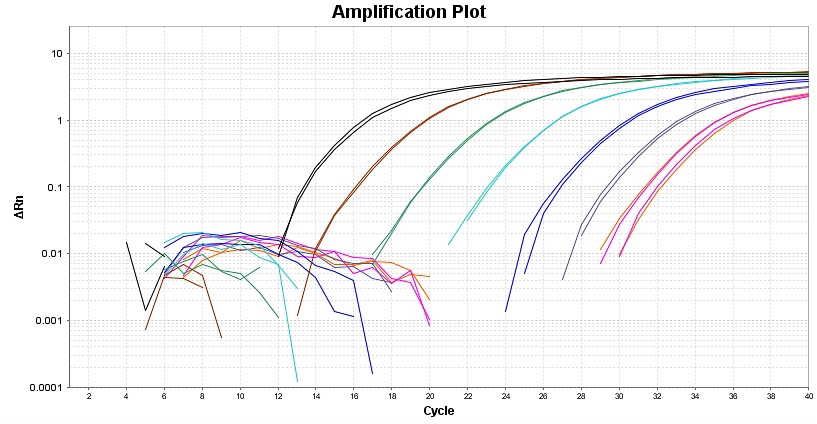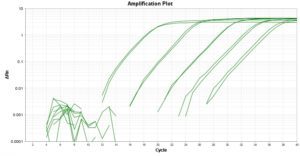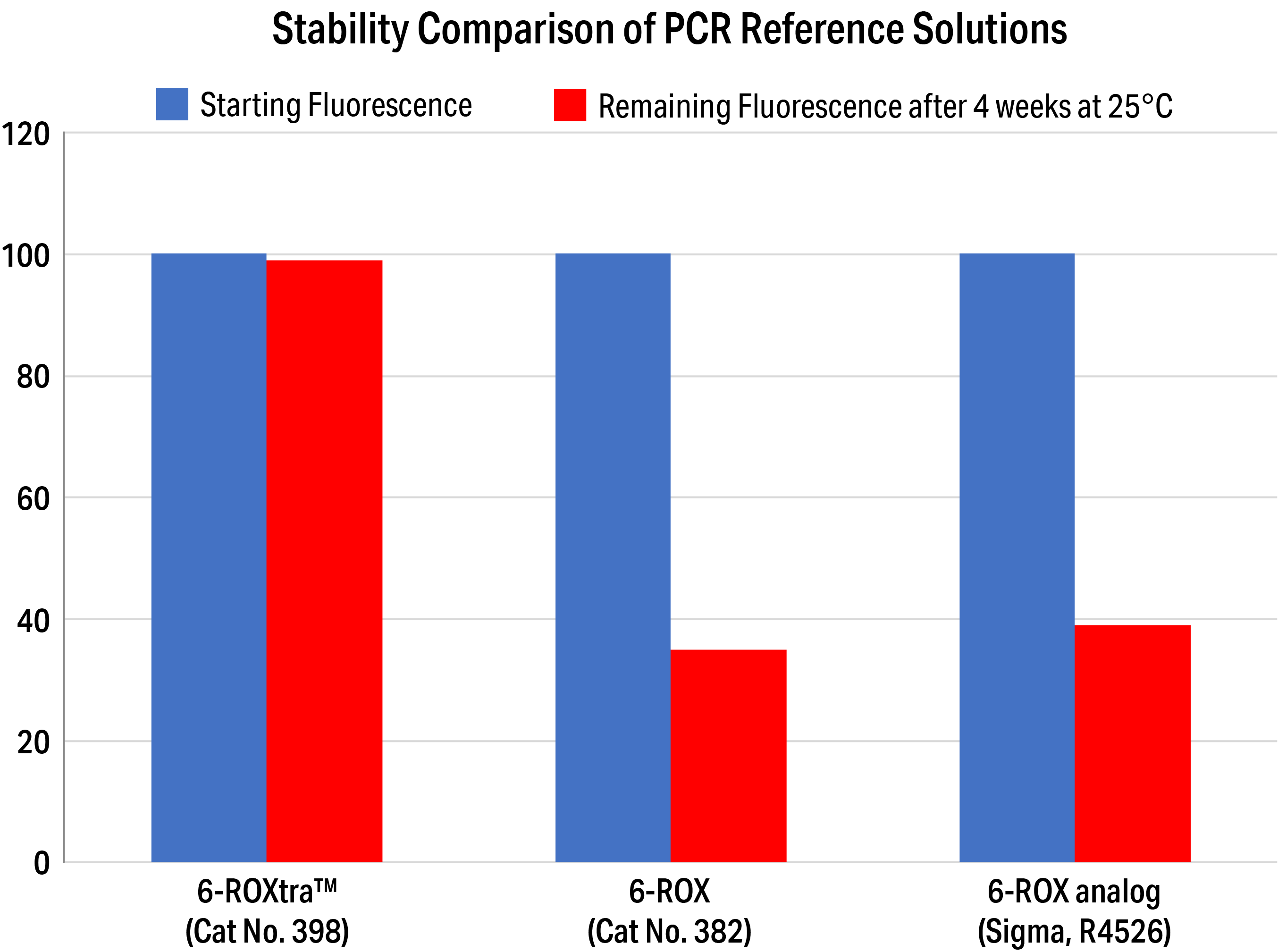Probe-Based qPCR
Figure 4. Illustration of probe-based qPCR. As DNA polymerase extends the primer during elongation, it hydrolyzes sequence-specific probes that have annealed to the single-stranded DNA template, separating the reporter dye from the quencher and resulting in an amplification-dependent increase in fluorescence (figure made in BioRender).
In probe-based qPCR, sequence-specific fluorescent probes are used in combination with primers to detect the amplification product. Of the many probe-based qPCR chemistries available, including hybridization probes and molecular beacons, the most widely used employs the 5’ nuclease assay associated with Taq DNA polymerase.
Probes for 5’ nuclease assays are synthesized with a fluorescent reporter dye (see Table 3 below), such as FAM, HEX, NED, TET, VIC, Cy3, or Tide Fluor™ dyes, covalently attached to the 5’ end and a quencher dye (see Table 4 below), such as DABCYL, TAMRA, BXQ-1, BXQ-2 or Tide Quencher™ dyes, to the 3’ end of a short oligonucleotide, which is complementary to the target DNA sequence. While the probe is intact, the reporter and quencher remain in close proximity to each other, FRET occurs, and consequently, the reporter dye signal is quenched. During PCR cycling, both the primers and probe anneal to the target. As Taq DNA polymerase binds to and extends the primer upstream of the probe, any probe bound to the correct target sequence is hydrolyzed, and the fragment containing the reporter dye is released. The fluorescence signal can now be detected, and the amount of fluorescence signal generated is proportional to the amount of qPCR products produced. See Table 5 below for information on fluorescent reporter/quencher pairs commonly used in qPCR.
Not only does this method benefit from high sensitivity and specificity, but it also allows multiplexing using probes with different combinations of reporter dyes. This allows for an increase in throughput, meaning multiple samples can be assayed per plate, and consequently, there is a reduction in both sample and reagent usage.
Table 3. Fluorescent reporter dyes for labeling the 5′ end or 3′ end on sequence-specific qPCR probes.
| Product |
Ex (nm) |
Em (nm) |
Unit Size |
Cat No. |
| EDANS acid [5-((2-Aminoethyl)amino)naphthalene-1-sulfonic acid] *CAS 50402-56-7* |
336 |
455 |
1 g |
610 |
| EDANS acid [5-((2-Aminoethyl)amino)naphthalene-1-sulfonic acid] *CAS 50402-56-7* |
336 |
455 |
10 g |
611 |
| EDANS C5 maleimide |
336 |
455 |
5 mg |
619 |
| EDANS sodium salt [5-((2-Aminoethyl)aminonaphthalene-1-sulfonic acid, sodium salt] *CAS 100900-07-0* |
336 |
455 |
1 g |
615 |
| EDANS sodium salt [5-((2-Aminoethyl)aminonaphthalene-1-sulfonic acid, sodium salt] *CAS 100900-07-0* |
336 |
455 |
10 g |
616 |
| Tide Fluor™ 1 acid [TF1 acid] *Superior replacement for EDANS* |
341 |
448 |
100 mg |
2238 |
| Tide Fluor™ 1 alkyne [TF1 alkyne] |
341 |
448 |
5 mg |
2237 |
| Tide Fluor™ 1 amine [TF1 amine] *Superior replacement for EDANS* |
341 |
448 |
5 mg |
2239 |
| Tide Fluor™ 1 azide [TF1 azide] |
341 |
448 |
5 mg |
2236 |
| Tide Fluor™ 1 CPG [TF1 CPG] *500 Å* |
341 |
448 |
100 mg |
2240 |
| Tide Fluor™ 1 CPG [TF1 CPG] *1000 Å* |
341 |
448 |
100 mg |
2241 |
| Tide Fluor™ 1 maleimide [TF1 maleimide] *Superior replacement for EDANS* |
341 |
448 |
5 mg |
2242 |
| Tide Fluor™ 1 succinimidyl ester [TF1 SE] *Superior replacement for EDANS* |
341 |
448 |
5 mg |
2244 |
| 5(6)-FAM [5-(and-6)-Carboxyfluorescein] *CAS 72088-94-9* |
493 |
517 |
1 g |
100 |
| 5(6)-FAM [5-(and-6)-Carboxyfluorescein] *CAS 72088-94-9* |
493 |
517 |
10 g |
101 |
| 5(6)-FAM [5-(and-6)-Carboxyfluorescein] *CAS 72088-94-9* |
493 |
517 |
25 g |
102 |
| 5(6)-FAM cadaverine |
493 |
517 |
100 mg |
127 |
| 5(6)-FAM ethylenediamine |
493 |
517 |
100 mg |
123 |
| 5(6)-FAM, SE [5-(and-6)-Carboxyfluorescein, succinimidyl ester] *CAS 117548-22-8* |
493 |
517 |
25 mg |
110 |
| 5(6)-FAM, SE [5-(and-6)-Carboxyfluorescein, succinimidyl ester] *CAS 117548-22-8* |
493 |
517 |
100 mg |
111 |
| 5(6)-FAM, SE [5-(and-6)-Carboxyfluorescein, succinimidyl ester] *CAS 117548-22-8* |
493 |
517 |
1 g |
112 |
| 6-FAM [6-Carboxyfluorescein] |
493 |
517 |
100 mg |
106 |
| 6-FAM [6-Carboxyfluorescein] |
493 |
517 |
1 g |
107 |
| 6-FAM [6-Carboxyfluorescein] |
493 |
517 |
5 g |
108 |
| 6-FAM Alkyne |
493 |
517 |
10 mg |
134 |





